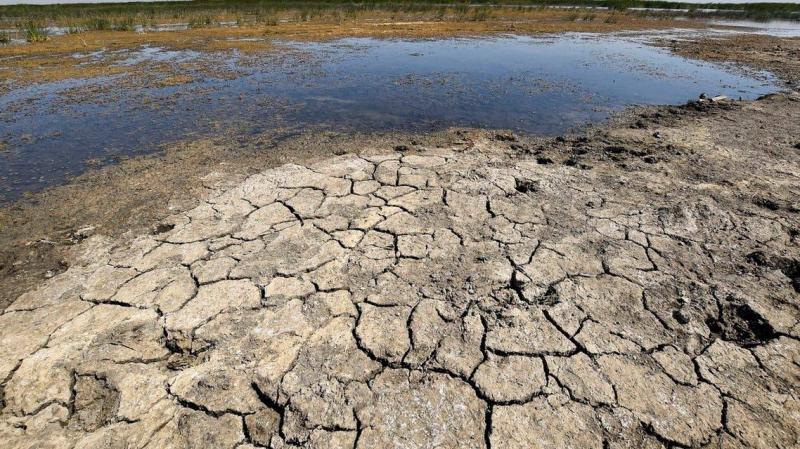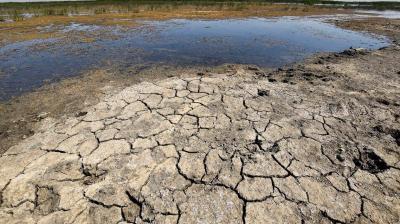Under the title "Drought Strangles Iraq: Turkish and Iranian Dams Make It Worse," the Al Arabiya website published an article addressing the issue of drought in Iraq. The article began by stating: "As if Iraq needed more calamities, desertification is creeping into its agricultural lands. Each year, the effects of climate change during the hot Iraqi summer increase on farmers and livestock breeders, who find themselves forced to migrate and sell their lands, after losing a significant number of their livestock and having their buildings consume what remains of arable land."
It continued, stating that in this country with a harsh desert climate even before the severe climate transformations, the marshes in the south formed a refuge for herds of buffaloes seeking shelter in its freshwater from summer temperatures exceeding fifty degrees Celsius. In the far south of Iraq, the Shatt al-Arab, Iraq's only outlet to the sea, was a paradise for sailors amid the thriving palm groves.
However, the situation has become semi-tragic today; water shortages in the Tigris and Euphrates rivers, particularly due to dams built by Turkey and Iran, along with their waterways being filled with a massive amount of waste from all the cities they flow through, have led to a catastrophe in the Shatt al-Arab. Salinity has begun to seep into agricultural lands, killing crops, as seen with farmer Rafiq Tawfiq's production. "Everything we plant dies," the locals lament. Tawfiq, a resident of Basra in southern Iraq, stated: "Everything we grow dies, the palm trees, the alfalfa, which usually endure salty water, all die."
In past years, salinity in the water transformed thousands of hectares of land into barren land and caused tens of thousands to be hospitalized in the summer of 2018. Agricultural engineer Alaa Al-Badran from this oil-rich province clarified that "the salinity of the water has risen this year, for the first time since April and the start of the agricultural season."
The rising salinity of water, combined with extremely high temperatures, is a death blow to the Iraqi agricultural sector, which constitutes 5% of the overall GDP and employs 20% of the total workforce in the country. However, it is a weak sector, as it does not meet more than half of the country's agricultural needs, while the markets are flooded with higher-quality agricultural imports.
Overall, "seven million Iraqis" out of 40 million have been affected by "drought and forced displacement," according to Iraqi President Barham Salih in a report he issued on climate change.
**Displacement Due to Thirst**
In the Al-Jabayesh area in southern Iraq, known for its marshes since the days of the Sumerians, farmer Ali Jaseb suffers from continuous migration. Each season, he must travel vast distances to provide his buffaloes with the suitable environment for milk production, which is the sole income for his family. He complained: "Every two or three months, we have to migrate to find water," adding, "If the buffaloes drink salty water, they become poisoned, stop producing milk, and then die."
The drought of rivers and marshes has become visibly evident and is accelerating steadily in a country that has witnessed wars and crises over the past 40 years that severely harmed the infrastructure. Iraq now lacks the means to adapt to increasingly harsh climates. According to the United Nations, only 3.5% of agricultural lands are equipped with irrigation systems.
This situation raises concern for Raed Hamid, also a livestock breeder, who, while standing on cracked and sun-scorched land, remarked: "Just ten days ago, this land was muddy, there was water and greenery."
**Only the Beginning**
This is only the beginning. In the coming years, the consequences of climate change will intensify, as the Iraqi president wrote: "With the highest population growth rates in Iraq, data indicates that the country's population will double from 38 million today to 80 million by 2050, which doubles the economic and social risks of climate change if left unaddressed." He added that temperatures are expected to rise by two degrees, and precipitation will decrease by 9% by 2050.
**Changing Occupations**
In the Khanqin area in eastern Iraq adjacent to Iran, farmer Abdul Razak Qadir, 45 years old, lamented his land and crops. He stated to AFP, "Four years have passed without rain" on his 38-hectare wheat field. Furthermore, Abdul Razak is seriously considering abandoning agriculture to work as a construction worker, as have most farmers in his area who have left their fields due to poor conditions and changed professions.
**Desertification Affects 69% of Agricultural Lands**
Desertification has affected "69% of Iraq's agricultural lands," according to the agricultural engineer Surmad Kamel, director of the planning department in the Forests and Combating Desertification Directorate. In light of the invading drought, desertification, and steady population increases, agricultural land is the biggest victim. Economist Ahmed Saddam explained: "On one hand, there is an increasing demand for housing, while on the other hand, agriculture no longer produces significant income."
**A Refugee Life for Rural People**
Moreover, land prices in Basra province, where he lives, have reached "between 20 and 120 million dinars," equivalent to about 27,000 to 82,000 USD. For farmers, these "are huge amounts they have never earned before, which is why they sold their lands," the expert added, noting that because of this trend, "10% of agricultural lands are converted into residential neighborhoods annually." This phenomenon is likely to accelerate the displacement of rural Iraqis in their country due to disruptions in economic, social, and climatic balance.




